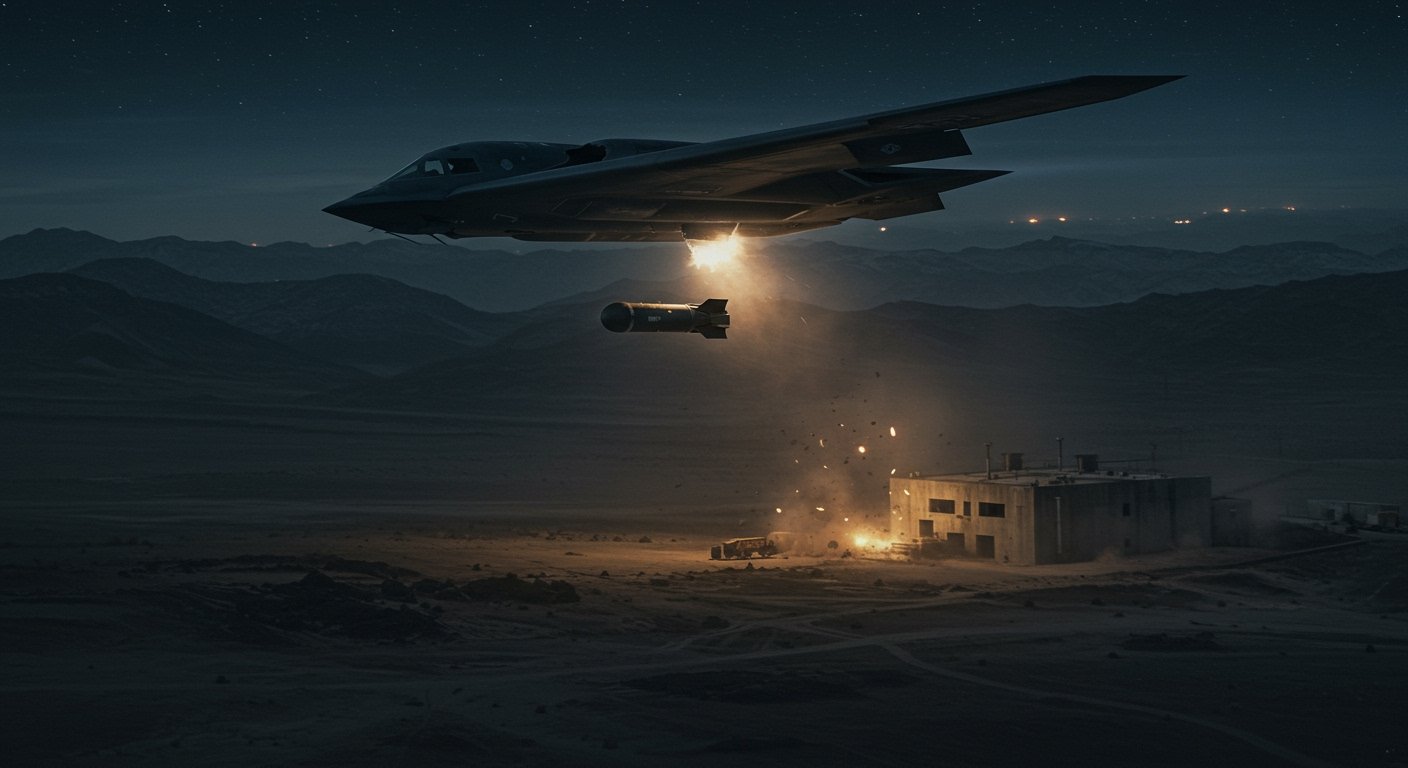In a significant escalation of regional tensions, the United States military, acting in concert with Israel’s ongoing air campaign, launched a major aerial assault on three Iranian nuclear sites on Saturday, June 21, 2025. The carefully planned operation, codenamed “Operation Midnight Hammer,” targeted facilities at Fordow, Natanz, and Esfahan, key components of Iran’s controversial nuclear program.
Details of “Operation Midnight Hammer”
The complex operation involved a vast array of U.S. air and naval assets. At the core of the aerial component were seven B-2 Spirit stealth bombers, launched from Whiteman Air Force Base in Missouri. This deployment marked the largest B-2 operational strike conducted in U.S. history, underscoring the scale and strategic importance of the mission.
In total, over 125 U.S. aircraft participated, including fighter jets providing escort and air superiority, and refueling tankers crucial for the long-range bombers. Military sources indicated that sophisticated deception tactics were employed to facilitate the strikes.
Complementing the aerial bombardment, U.S. submarines positioned in the region launched over two dozen Tomahawk cruise missiles, specifically targeting infrastructure within the Esfahan complex.
A key element of the attack involved the deployment of fourteen GBU-57 Massive Ordnance Penetrators (MOPs). These formidable 30,000-pound “bunker-buster” bombs are designed to destroy deeply buried hardened targets. According to reports, these powerful munitions were dropped on two of the targeted sites, including the heavily fortified Fordow facility.
Official Statements and Justification
Shortly after the strikes concluded, President Donald Trump addressed the nation, characterizing the operation as a “very successful attack.” President Trump stated definitively that the targeted sites had been “completely and totally obliterated,” suggesting extensive damage to the Iranian nuclear infrastructure.
U.S. officials elaborated on the rationale behind the strikes, emphasizing that the operation was intended to be limited in scope and was not aimed at regime change in Iran. The stated goals were focused squarely on neutralizing potential threats posed by the Iranian nuclear program and for the collective self-defense of U.S. troops stationed in the region and the state of Israel.
Iran’s Reaction and Regional Implications
The U.S. action drew swift condemnation from Tehran. Iran’s Foreign Minister, Abbas Araghchi, publicly accused the United States of breaching international law through the unilateral military intervention.
Domestically, Iranian state media reported that the Iranian parliament had approved considering a highly significant response: the potential closing of the Strait of Hormuz, a vital global oil transit chokepoint. However, the report noted that the final decision on this potential action would require ratification by the Supreme National Security Council.
The international community reacted with concern. On Sunday, June 22, 2025, the International Atomic Energy Agency (IAEA), the global nuclear watchdog, issued a statement indicating that initial monitoring had detected no increase in radiation levels at the targeted nuclear sites. The absence of detectable radiation suggests either a successful containment or that the strikes did not release significant radioactive material.
India’s Prime Minister Narendra Modi called for immediate de-escalation of the volatile situation, highlighting the potential for wider conflict. The heightened tensions also had immediate diplomatic repercussions, leading to the postponement of the Egyptian Foreign Minister’s scheduled visit to India.
The strikes mark a critical juncture in the long-standing confrontation over Iran’s nuclear activities and the broader regional power dynamics, raising questions about the potential for further military action and the future of international diplomacy concerning the Iranian nuclear program.




